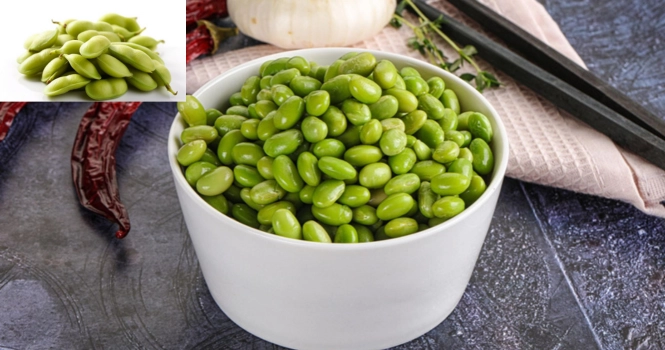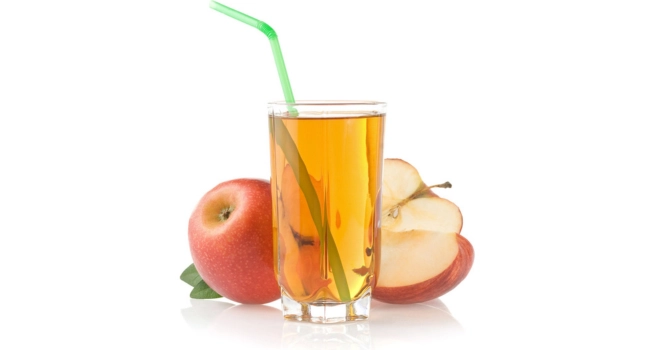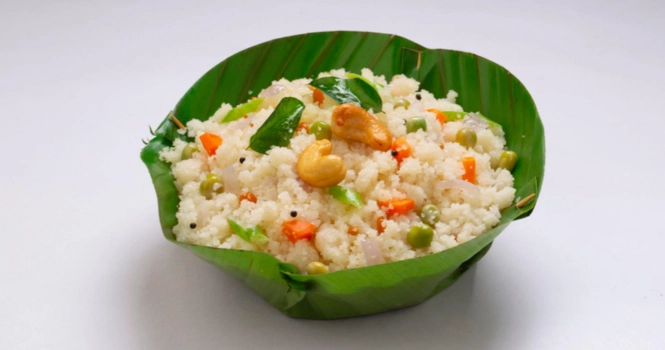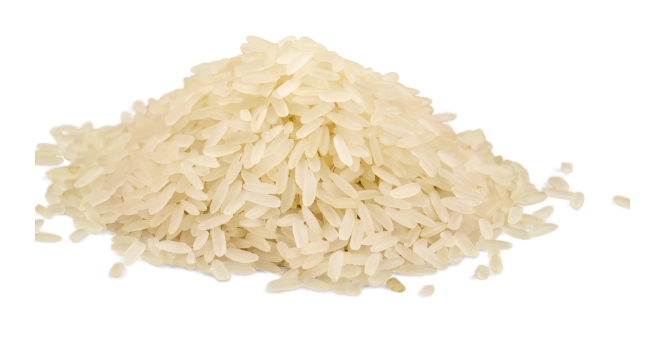Edamame: The Nutritious and Delicious Green Snack

Edamame, young green soybeans harvested before reaching full maturity, serves as both a popular snack and a culinary ingredient, particularly in East Asian cuisines.
Unlike mature soybeans, which are often dried and used in a variety of products, edamame is enjoyed for its tender, slightly sweet, and nutty flavor.
The pods are typically steamed or boiled and served with a sprinkle of salt, making them not only a delicious but also a nutritious choice.
Origins of Edamame
The origins of edamame trace back to East Asia, with historical records suggesting its consumption in Japan, China, and Korea for over a thousand years. The term “edamame” itself is Japanese, where “eda” means “branch” and “mame” means “bean,” referring to the traditional harvesting method of picking the beans along with their branches.
Historical Significance
In Japan, edamame has been a staple part of the diet since the Edo period (1603-1868), initially served as a snack in teahouses and later becoming a common appetizer in izakayas (Japanese pubs). Its ease of cultivation and nutritional benefits quickly made it a favored food item across other parts of East Asia as well.
Cultural Significance
It holds a special place in East Asian culinary traditions, often associated with simplicity, health, and the enjoyment of natural flavors.
In Japan, it is synonymous with the summer season and is traditionally enjoyed with a cold beer, making it a quintessential part of social gatherings and festive occasions.
Similarly, in China and Korea, edamame is consumed as a healthy snack or used as an ingredient in various dishes, showcasing its versatility and cultural adaptability.
The introduction of edamame to Western cultures in recent decades has seen its popularity soar beyond its traditional roots, embraced by health enthusiasts and culinary explorers alike. Its rich nutritional profile, combined with its ease of preparation and delightful taste, has secured edamame’s place as a beloved snack and ingredient worldwide, transcending cultural and culinary boundaries.
Nutritional Benefits of Edamame
It is a nutrient-dense food, offering a rich blend of vitamins, minerals, protein, and fiber, making it a valuable addition to any diet. Its comprehensive nutritional profile supports various health benefits, from heart health to weight management.
Nutritional Content
- Protein: It is an excellent source of high-quality, plant-based protein, crucial for muscle repair, growth, and overall bodily functions. A one-cup serving provides about 17 grams of protein.
- Fiber: High in dietary fiber, it aids in digestion, promotes a feeling of fullness, and helps maintain a healthy gut microbiome. One cup contains roughly 8 grams of fiber.
- Vitamins: It is rich in essential vitamins, including Vitamin K, which plays a key role in blood clotting and bone health, and folate (Vitamin B9), important for DNA synthesis and repair.
- Minerals: It’s a good source of minerals such as iron, crucial for oxygen transport in the blood; calcium, vital for bone health; and magnesium, important for muscle function and energy production.
- Antioxidants: It contains antioxidants like isoflavones and saponins, which have been linked to various health benefits, including reduced risk of chronic diseases.
Health Benefits
- Heart Health: The combination of high fiber, protein, and antioxidants in it can contribute to cardiovascular health by lowering cholesterol levels, reducing blood pressure, and decreasing the risk of heart disease.
- Weight Management: The high protein and fiber content in it promote satiety, which can help control appetite and support weight management efforts. Its low calorie and low saturated fat content make it an ideal snack for those looking to maintain or lose weight.
- Bone Health: Rich in calcium and magnesium, it can support bone density and overall bone health, potentially reducing the risk of osteoporosis, especially in postmenopausal women.
- Cancer Prevention: Isoflavones in edamame have been studied for their potential role in cancer prevention, particularly breast and prostate cancer. These compounds may help regulate hormone levels and inhibit tumor growth.
- Diabetes Management: The fiber in edamame can help regulate blood sugar levels, making it a beneficial food for individuals managing diabetes or at risk of developing the condition.
Culinary Uses and Recipes for Edamame
It’s versatility in the kitchen makes it a favorite among chefs and home cooks alike. From appetizers to main courses, its mild, nutty flavor and pleasing texture can enhance a wide range of dishes.
Culinary Uses
- Appetizers and Snacks: Traditionally served as a simple, salted snack in its pod, edamame is a popular appetizer in Japanese cuisine. Just steamed and lightly salted, it’s perfect for nibbling before meals or as a healthy snack.
- Salads: Shelled edamame adds protein and texture to leafy green salads, grain salads, or pasta salads. Its bright green color also adds a visual pop to dishes.
- Soups and Stews: Edamame can be added to soups and stews, either in the pod for casual, hands-on dining or shelled for a more refined presentation.
- Main Dishes: It can be incorporated into stir-fries, rice dishes like fried rice, and noodle dishes, providing a protein boost and enriching the overall dish.
Cooking and Preparing Tips
- Boiling: To boil edamame, bring a pot of water to a boil, add the pods with a pinch of salt, and cook for 5-6 minutes until tender. Drain and serve warm or cold.
- Steaming: Steaming edamame in its pods preserves its nutrients and flavor. Steam for about 5-10 minutes and sprinkle with salt or other seasonings.
- Sautéing: Shelled edamame can be quickly sautéed with a bit of oil and your choice of seasonings for a flavorful addition to meals.
Recipe Ideas
- Edamame Hummus: Blend shelled edamame with tahini, lemon juice, garlic, and olive oil for a vibrant, protein-packed twist on traditional hummus.
- Edamame and Quinoa Salad: Combine cooked quinoa with shelled edamame, chopped vegetables (like bell peppers, cucumber, and cherry tomatoes), fresh herbs, and a lemony vinaigrette for a nutritious and filling salad.
- Garlic Chili Edamame: Sauté whole edamame pods in a bit of oil with garlic, chili flakes, and a splash of soy sauce for a spicy, flavorful snack or side dish.
- Edamame Fried Rice: Stir-fry cooked rice with shelled edamame, diced vegetables, scrambled eggs, and a touch of soy sauce for a complete meal.
It’s simplicity and health benefits make it an excellent ingredient to experiment with in the kitchen. Whether you’re looking for a quick snack, a protein boost for your salads, or a green addition to your stir-fries and rice dishes, edamame offers both nutritional value and culinary versatility.
Purchasing and Storage Tips for Edamame
Whether you prefer fresh or frozen edamame, knowing how to select and store it properly can ensure you enjoy its optimal flavor and nutritional benefits.
Purchasing Tips
- Fresh Edamame: When buying fresh edamame, look for pods that are bright green, firm, and plump. The pods should be free from blemishes or signs of drying out. Freshness is key, as older pods may be tough and less flavorful.
- Frozen Edamame: Frozen edamame is a convenient and often equally nutritious option. Check the packaging for any signs of freezer burn or damage. Opt for packages where the edamame is loose inside, indicating it hasn’t been thawed and refrozen.
Storage Tips
- Storing Fresh Edamame: Fresh edamame pods should be stored in the refrigerator to maintain their freshness. Keep them in a plastic bag or a container in the crisper drawer. Use fresh edamame within a few days of purchase to enjoy its best quality.
- Freezing Fresh Edamame: If you have more fresh edamame than you can use in a few days, you can freeze it. Blanch the pods in boiling water for 2-3 minutes, then plunge them into ice water to stop the cooking process. Drain well and freeze in airtight bags or containers.
- Storing Frozen Edamame: Keep frozen edamame in its original packaging in the freezer. If the package is opened, transfer the remaining edamame to an airtight container or resealable freezer bag to prevent freezer burn. Frozen edamame can last for up to a year in the freezer without significant loss of quality.
Thawing Frozen Edamame
- For most uses, frozen edamame can be cooked directly from frozen, making it a convenient option for quick meals. If you need to thaw it, place the desired amount in the refrigerator overnight, or use a microwave’s defrost setting for immediate use.
By following these purchasing and storage tips, you can ensure that your edamame remains fresh, flavorful, and nutritious, ready to be enjoyed as a snack or incorporated into your favorite dishes.
Sustainability and Environmental Impact of Edamame Cultivation
Edamame, as a soy product, brings several sustainability and environmental considerations to the forefront. Understanding the impact of edamame cultivation can guide more informed and eco-conscious choices.
Sustainability of Edamame Cultivation
- Soil Health: Soybeans, including edamame, are known for their ability to fix nitrogen in the soil, a process that naturally enriches the soil and reduces the need for synthetic fertilizers. This nitrogen-fixing ability makes edamame a valuable crop in terms of soil health and sustainability in agricultural practices.
- Crop Rotation: Edamame is often used in crop rotation systems, which helps break cycles of pests and diseases, reduces soil erosion, and increases soil fertility. By rotating crops, farmers can maintain the health of their land, ensuring sustainable production over time.
Environmental Impact
- Water Usage: Soy cultivation, in general, requires a significant amount of water, which can be a concern in areas facing water scarcity. However, when compared to animal-based proteins, edamame and other soy products typically have a lower water footprint.
- Pesticides and Herbicides: Conventional soy farming might involve the use of pesticides and herbicides, which can have detrimental effects on surrounding ecosystems and biodiversity. The runoff from these chemicals can contaminate water sources, harming aquatic life and reducing water quality.
Making Eco-Conscious Choices
- Organically Grown Edamame: Opting for organically grown edamame can help minimize exposure to synthetic pesticides and fertilizers, contributing to healthier ecosystems and reducing your environmental footprint. Organic farming practices support biodiversity and soil health, aligning with sustainable agriculture principles.
- Locally Sourced Edamame: Whenever possible, choosing locally sourced edamame can reduce the carbon footprint associated with transportation and support local economies. Locally grown produce is often fresher, and purchasing it encourages sustainable practices within local farming communities.
Edamame stands out not only for its nutritional benefits and culinary versatility but also for its role in sustainable agriculture. Its cultivation can contribute positively to soil health and crop rotation practices.
However, the environmental impact of water usage and chemical inputs in conventional farming practices cannot be overlooked. By opting for organically grown and locally sourced edamame, consumers can enjoy this nutritious food while supporting sustainable agriculture and minimizing their environmental impact.
Making informed choices about the origin and cultivation practices of edamame can lead to healthier ecosystems and a more sustainable food system.









